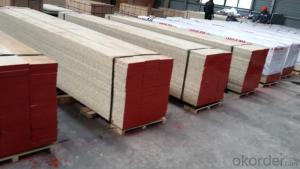Laminated Plywood – The Power of Layered Wood
When we talk about the power of layered wood, we’re not just discussing its ability to support weight or its versatility in construction. We’re diving into a world where creativity meets functionality, where each layer tells a story, and every piece is a canvas for innovation. Let’s explore the fascinating world of laminated plywood, its history, applications, and the magic it brings to the table in various industries.
The Origins of Laminated Plywood
Before we dive into the modern applications of laminated plywood, it’s essential to understand its roots. The concept of layering wood veneers to create a strong and stable material dates back to ancient Egypt. However, it wasn’t until the 19th century that the process was refined and patented by a Frenchman named Jean-Baptiste-Léon Grosse. His invention revolutionized the furniture industry and laid the groundwork for the versatile material we know today.
The Art of Plywood Construction
Laminated plywood is crafted by gluing together thin layers of wood veneer. These layers, or plies, are arranged with their grain directions at right angles to each other. This cross-graining significantly enhances the strength and dimensional stability of the final product. The process is both an art and a science, requiring precision and a keen understanding of wood’s natural characteristics.
The Versatility of Laminated Plywood
One of the most significant advantages of laminated plywood is its versatility. It’s used in everything from furniture and cabinetry to musical instruments and even aircraft construction. The ability to bend and mold plywood into curved shapes without losing its structural integrity has opened up a realm of possibilities for designers and architects alike.
Sustainable and Eco-Friendly
In today’s world, where sustainability is a top priority, laminated plywood stands out as an eco-friendly choice. It’s made from renewable resources and can be sourced from responsibly managed forests. Moreover, the manufacturing process is relatively low-impact, making it a green alternative to other materials.
The Role of Laminated Plywood in Modern Design
Modern design is all about pushing boundaries and exploring new forms. Laminated plywood has been at the forefront of this movement, with designers like Charles and Ray Eames, who famously used it to create their iconic Eames chair. The material’s flexibility allows for the creation of organic shapes and structures that were previously unimaginable.
The Challenges and Solutions
Despite its many benefits, laminated plywood faces challenges such as cost and the need for specialized tools and techniques for bending. However, advancements in technology and manufacturing processes have made it more accessible and affordable. The development of new adhesives and bending techniques has also expanded the material’s potential applications.
The Future of Laminated Plywood
As we look to the future, laminated plywood is poised to play an even more significant role in various industries. From architecture and design to automotive and aerospace, its potential is limitless. Innovations in material science and engineering will continue to unlock new possibilities for this age-old material.
In Conclusion
Laminated plywood is more than just a building material; it’s a testament to human ingenuity and creativity. Its layered structure is a metaphor for the many facets of our lives, each layer adding depth and strength. As we continue to innovate and explore, laminated plywood will undoubtedly remain a powerful force in the world of design and construction.






